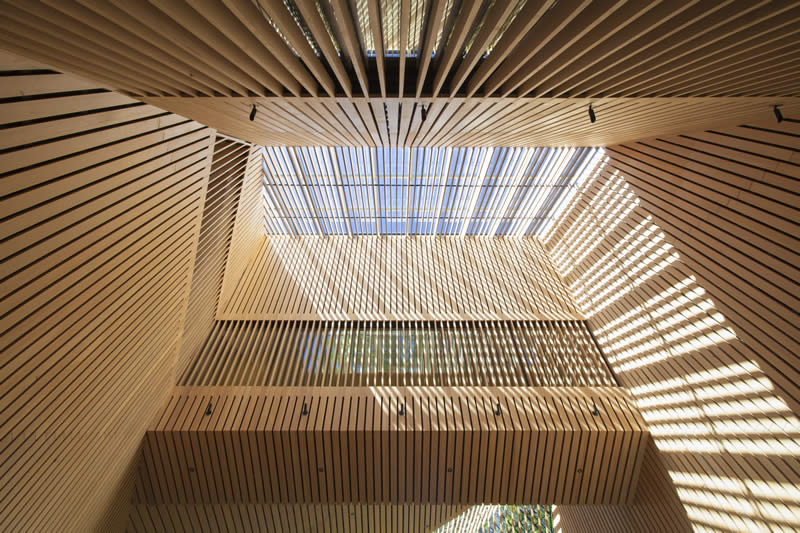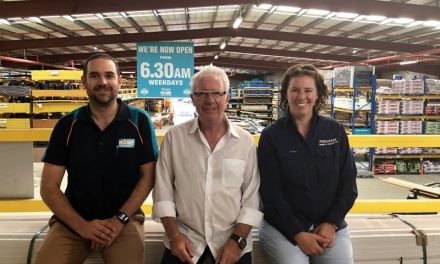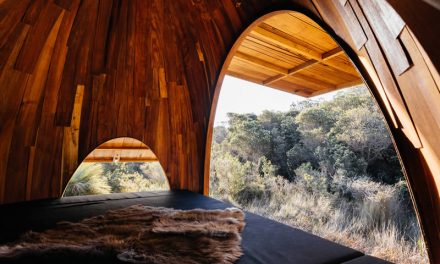The Audain Art Museum has won an Award for International Excellence for its seamless marriage of location and material.
The Royal Institute of British Architects announced their list of 20 winners of the RIBA Awards for International Excellence in May. The winners are now in the running for the RIBA International Prize 2018. They were culled from a longlist of 62 by an expert jury and will be further narrowed to a set of four finalists in September, with the winner to be announced in November.
Several focus on timber as a key building component; none more so than Canada’s Audain Art Museum in Whistler, British Columbia (B.C.). Designed by Patkau Architects it is a private commission built to house the art collection of philanthropist Michael Audain. The extraordinary collection focuses on local art – from a leading display of First Nations masks, through Canadian modernists to contemporary artists.
The museum is surrounded by evergreen forest and is within the floodplain of Fitzsimmons Creek. In winter, the snowfall averages 11 metres. With such a remarkable environment and contents, the building had to be something special, so the architects responded by merging the design languages of the forest and nearby Whistler Village. The museum forms a metaphorical and literal bridge between the village and Fitsimmons Creek, the void beneath it becoming a walk through a meadow in clement conditions.
Its peaked, dark metal skin sits quietly within the forest, shedding snow in winter and maximising solar warmth on clear days. Bursting out of this sober cladding like rays of sunshine at the entry porch and glazed walkway is a bright timber casing of Pacific Coast hemlock, supplied by local company Whistler Forest Products in conjunction with several other specialist local forestry manufacturing firms. The precisely cut timbers set up a rhythm that moves throughout the building, contrasting with the simple white main gallery spaces and huge panes of glazing to make the museum warm and playfully sculptural, reminiscent of local ski resort designs.
The RIBA gong is one of a long list of awards for the museum, including the 2017 AIBC Lieutenant Governor of British Columbia Medal in Architecture and a 2018 American Institute of Architects Award.
Timber tales
As befits a museum with such a strong regional focus, a great deal of the work and materials that went into the museum were sourced locally. Richard Klinkhamer, owner and general manager of Whistler Forest Products, says that there were some six months between his company bidding for the wood supply and the first purchase orders to sawmillers. He told TTN, “All the hemlock was from the Pacific Coast of B.C. with all sources being PEFC approved, meaning the logging and processing was done sustainably.”
The large volume of high-grade, vertical-grain clear hemlock was cut to exacting custom dimensions by B.C. locals Mainland Sawmill with a PEFC-certified custom cut for J&G Log Works.
“J&G also managed most of the kiln drying except whatever needed to be resawn smaller for some of the products before kiln drying,” says Klinkhamer
The actual cutting was one of the most complex parts of the build and required an innovative approach. As Klinkhamer says, “The remanufacture was handled expertly by Cedarland Forest Products, who made up all the shop drawings to be reviewed by Patkau Architects, and then moulded the works into the many different profiles. Some were very difficult to make, like parallelograms that had up to 49-degree angles on the edges.
“The entire production had to have a one millimetre pencil line break on all edges, which meant it all had to be moulded twice. When they were done we had over 48 packages including 19 profiles, 12 of which were different” Klinkhamer concludes, adding, “Not an easy job,” with casual Canadian understatement.
Next came the finishing of the timbers. Klinkhamer says, “Fisher Coating which sanded all the stock, applied the fire-retardant treatment to the exterior stock, which had to dry before applying the two coats of stain. A lot of the stock had to be good on four sides, which is almost impossible for a pre-stain plant to perform, but they set-up a method of holding the pieces at an angle where they sat still for four coats until dry, and then were packaged for shipment to the museum – innovation wins again.”
But the process wasn’t simple. “Fire treating the outside portion of the order took quite a while,” Klinkhamer says, as had the approvals process for the timber drawings, which meant that eight months elapsed from the first purchase orders to the first shipment of timbers to Audain. It took place on 20 August, 2015, the first of 11 shipments, the last on 2 March, 2016. The total volume of timber added up to about 70,000 board feet – over 165 cubic metres.
Every aspect of the build was carefully managed by Patkau Architects and their construction manager Axiom Builders. The result is a building that performs its function flawlessly, while celebrating both its contents and its materials. As Klinkhamer says, “General opinion of the hemlock has been affirmative and I feel grateful for being able to be involved in the project.”
At a glance: Audain Art Museum, designed by Patkau Architects, led by John Patkau and Patricia Patkau. Timber by Whistler Forest Products, built by Axiom Builders. For more, visit patkau.ca/projects/audain-art-museum or www.whistlerforestproducts.com












